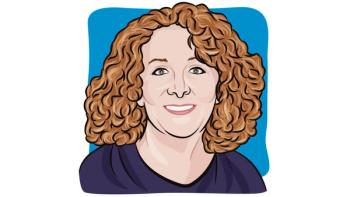This week I have been researching a story that will appear in the winter issue of CURE on the environmental connections to cancer. Just as I am reading the 2008-2009 Reducing Environmental Cancer Risk from the president's cancer panel, we are hearing that the EPA is going to take one of the biggest hits in the new budget cuts. Interesting. In its report from 2009, the President's Cancer Panel blasted the regulation of environmental contaminants, enumerating what it defined as the key issues (read barriers) in more effective regulation of environmental contaminants. It began with "inadequate funding and insufficient staffing." While this was not directly aimed at the EPA, the majority of the recommendations the panel makes fall at the feet of the EPA. Number 2 is fragmented and overlapping authorities coupled with uneven and decentralized enforcement. Number 3 is excessive regulatory complexity and 4, weak laws and regulations. But number 5 sums it up for me, and seems to impact the others 4: Undue industry influence. The republicans have made it clear they want less regulation because it's good for business. It sure is. The cancer business is booming. Granted, the recommendations the panel puts forth bring in lots more agencies than the EPA, among them OSHA, USDA, National Institute of Environmental Health Services, the Department of Defense (since the military has a huge amount of contaminants it clearly isn't managing well). I remember when the panel released its report back in 2009 and the small splash it made when they reported, "the true burden of environmentally induced cancer has been grossly underestimated." Within a few days the furor had died down except for those whose lives have been forever altered by cancer – particularly those whose children have faced cancer. Children, the panel reports, are extremely vulnerable to carcinogens. Here is one passage from the report that hit me, a mother and cancer survivor, really hard."While all Americans now carry many foreign chemicals in their bodies, women often have higher levels of many toxic and hormone-disrupting substances than do men. Some of these chemicals have been found in maternal blood, placental tissue, and breast milk samples from pregnant women and mothers who recently gave birth. Thus, chemical contaminants are being passed on to the next generation, both prenatally and during breastfeeding. . . children of all ages are considerably more vulnerable than adults to increased cancer risk and other adverse effects from virtually all harmful environmental exposures. In addition, some toxics (sic) have adverse effects not only on those exposed directly (including in utero), but on the offspring of exposed individuals."So we are already behind Europe in identifying carcinogens and banning them before they hit the market, what the panel called reactionary response instead of proactive. In other words, not until someone gets sick do we look at the potential carcinogens, and then there is little movement to ban the drugs because to do so would be "bad for business."
